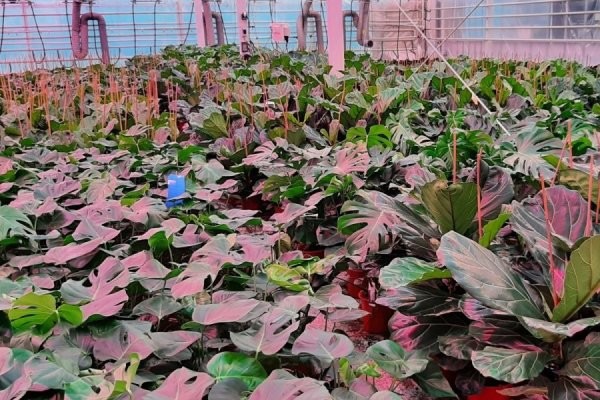Which combination of two crops in a greenhouse can be grown fossil-free and with less than 100 kWh/m2 of energy per year? The Kas als Energiebron innovation program posed this question to the Greenhouse Horticulture and Flower Bulbs Business Unit of Wageningen University & Research. That maximum appears to be achievable with a combination of seven months of sweet peppers and 4,5 months of green potted plants. Researcher Arca Kromwijk (WUR): "It is very interesting to start with energy availability and look at suitable combinations of different crops from there."
An energy consumption of 100 kWh/m2 (electricity) per year for two crops is low. The search started with peppers. By growing that crop from mid-March to the end of October, little energy is required in the summer; in the winter months there is still energy 'left' for another crop with a higher value than pepper (which has a very slow growth and production). Since there is less sunlight during that period, green potted plants are ideal: as they are used to a shaded environment they can grow under low light conditions.

This combination was investigated in WUR's Greenhouse2030. The aim of this project is a fossil-free and emission-free cultivation with sustainable crop protection. No fossil fuels are used in Greenhouse2030: the greenhouse is heated by heat from the LED lighting in the winter, latent heat (from dehumidification), by sunlight and possibly heat extraction in the summer to prevent an imbalance in cold demand and cold production of the heat pump. If all the electricity used is purchased green, the cultivation is free of fossil fuels.
Combination of pepper and green potted plants
The research in the Greenhouse2030 shows that the combination of pepper and green potted plants works well and remains within the maximum energy requirement. Both crops have a good production. Moreover, the greenhouse is designed in such a way that it can easily be rearranged for another crop. For example, the greenhouse has a lava floor on which either the pots or the pepper substrate is placed: drain water can be drained via the floor, disinfected and reused. The pipe rail system is used in pepper cultivation for internal transport; With the green potted plants, the tubes are lifted to create an empty floor space for the Ø 21 cm pots to be placed side by side. The tubes are still used for heating.
Pepper growers and pot plant growers from the research's supervisory committee responded enthusiastically: combining two crops appears to have many advantages, while the conversion is relatively easy. Kromwijk (WUR): "This research shows that you can look at energy in a different way. That other view is exactly what we need in the future. Next year we will investigate a different combination of crops: melon in the summer with another complementary crop in the winter."
Source: wur.nl
